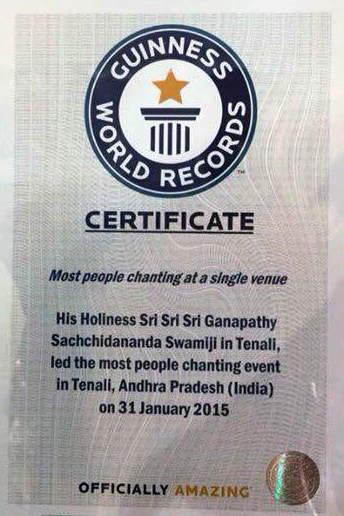Eta dicchāmyahaṃ śrotuṃ paraṃ koutūhalamhi me
Maharṣe! tvaṃ samartho si jñātu mevaṃ vidhaṃ naram
Meaning- O great Maharishi! I am full of curiosity and am eagerly awaiting to listen to the answers to all my questions. You possess this eligibility to reveal to me about that person who has in him all these above-mentioned traits.
There is a Telugu proverb- ‘adigevariki cheppevaru lokuva’, which means – the person who enquires, considers the one who answers, to be inferior.
Here however, the person who is asking the question is an supreme sage (Maharishi). The one to whom the question has been put forth to is yet another eminent sage. The seeker is questioning in all humility after giving due respect and due reverence to the enlightener and addressing him as ‘Maharishi’. The seeker also makes it clear that through this questioning, he does not seek to display his learning and cleverness, nor is he trying to test the intelligence of his teacher.
Through the usage of the word ‘shrotum’ the seeker explicitly clarifies that he is questioning with the sole intention of listening and learning. ‘I am the shrota, You are the vakta’ he implies here. This means, ‘I am the student, the listener and you are the teacher and the orator’. This is the way to ask.
‘O master, I am eager to learn. You please take your time and teach me when appropriate’ – this respect that Maharishi Valmiki has towards his Guru is visible in his words.
Complete trust and faith in the Guru are a must. Doubts regarding his abilities, capabilities and knowledge should never ever be entertained. Once you have accepted a person as your Guru, then you should treat whatever he says as nectar (amruta). Only then will all doubts be dispelled from the mind. To highlight and teach this, Valmiki Maharishi uses the words- ‘tvam samartho si’.
Samarthah means he who is competent. This is the ordinary meaning. He who has thoroughly and completely understood the deeper meaning of the entire Vedas is the special meaning for this word ‘samarthah’. The word artha also means wealth. Therefore samartha is he who possesses the wealth called knowledge. He is none other than Narada. He is the Supreme Guru.
Valmiki Maharishi has enquired about the 16 traits. To clarify that he is not enquiring about Lord but about a human being, the word ‘naram’ (human being) has been used in the hymn.
Subtly, through the usage of this word, the oneness (abheda) between the individual soul (jeevatma) and the supreme soul (Paramatma) is being highlighted.
We have discussed earlier that only Paramatma, the Supreme Being, can have in him these 16 traits. Now, Valmiki Maharishi enquires about a human being who has in him all these 16 traits. Thus, the oneness between the individual being and Supreme Being is clearly being highlighted.
When seen from this point, the entire Ramayana is a wonderful (adbhuta) treatise about the theory of advaita (non-dualism). Now we shall discuss the reply given by the Supreme Master, Maharishi Narada.
Om seetaraamaabhyaam namaha.
(a portion of the video is missing. However the complete translation of the original episode is covered).

